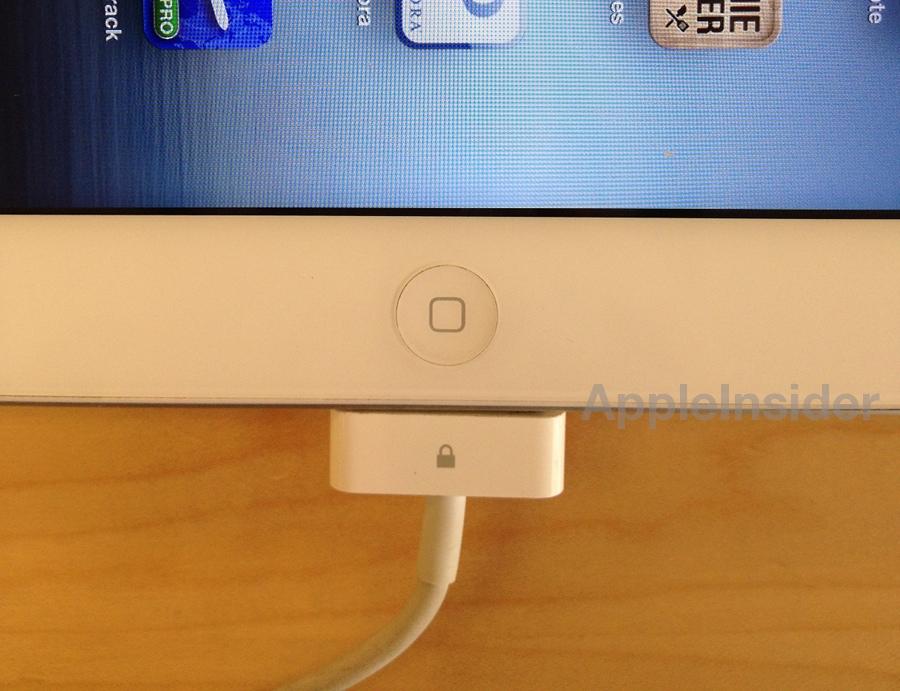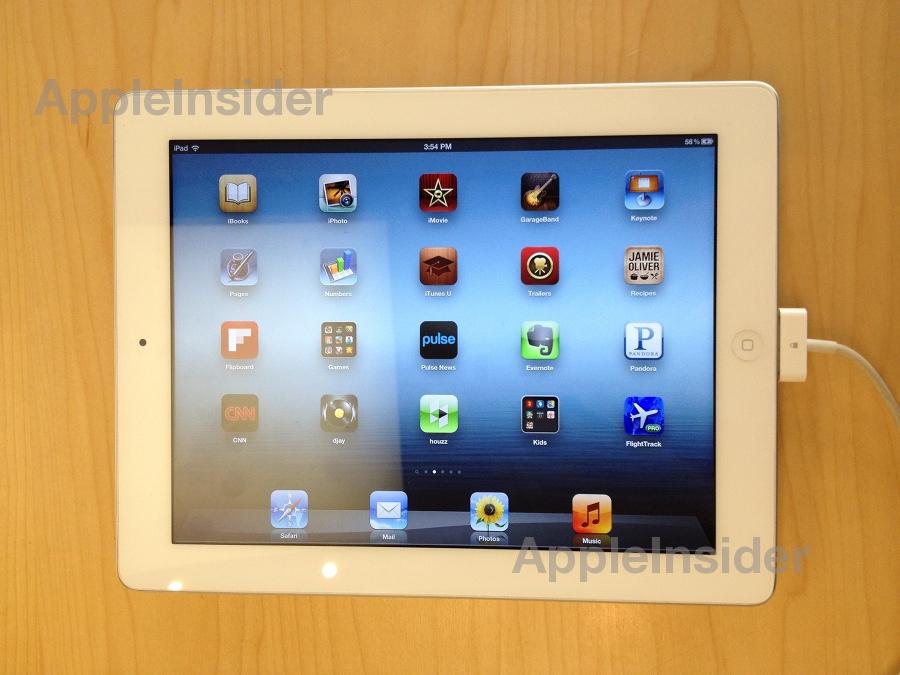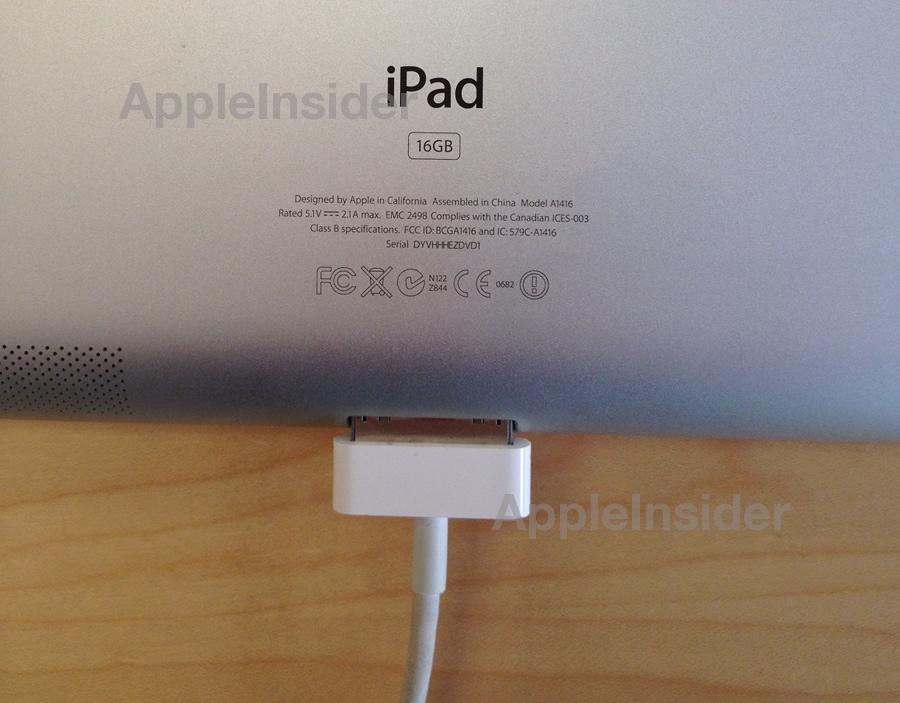AppleInsider reader Chris first noticed the new cable on Wednesday when visiting his local Apple Store, and it has been confirmed that a number of locations nationwide have started to implement the new connector, though supply may be an issue as not every iDevice has their own, with most of the units being reserved for expensive third-generation iPads or products near the store's entrance.
By looking and playing the part of the dock connector that comes with every iPad, iPhone and iPod touch, Apple's new security cable belies its ability to completely lock down a device to avoid theft. The difference lies in how the security unit is removed, or rather how it can't be removed, from an iDevice.
Perhaps the only way to tell the mechanism apart from its less-secure counterpart is the "lock" logo emblazoned on its front, which takes the place of Apple's usual "line within a box" representation of a male/female connector. When attached to an iDevice, the cable physically locks in to the product's metal chassis just as a normal dock connector, but the internals have been tweaked to prevent the unit from disengaging, essentially tethering the product to the display table.
While the inner workings of the new cable are a mystery, a simple reshaping and bolstering of the attachment prongs could easily do the job, much like the first-generation 30-pin connectors that could only be released when users pinched two side-mounted actuators. It is thought a special tool may be needed to disengage the unit, though representatives declined to comment on the mechanism's intricacies. Also unknown is how the USB side of the cable works with the system as it was hidden within the display table, but it is most likely attached via conventional means.
Close-up view of "lock" logo.
It is unknown if a third party is producing the product, but retail personnel say the cable is functionally different than previous "contact" security measures taken by all brick-and-mortar Apple Stores. Currently, a wire cable is affixed to the back of display units with an adhesive patch which, while fairly strong, can be pried off with the right amount of force. The thin cables can also be connected to an alarm, alerting staff when a wire has been cut or tampered with. One person familiar with the matter claims the new cables are alarm-capable, but did not explain how the system functions.
Besides the extra safety ensured by the physical mechanism, the new connector provides a more elegant lockdown solution than having a multitude of wires sprouting out of a device.
One employee likened the cable to the Kensington lock slot used to protect MacBook Pros from would-be thieves. It should be noted that the slot is not included in the MacBook Pro with Retina display, likely due to the laptop's thin design.
When asked if Apple would be releasing a version of the cable to the public, representatives said they were unaware of any such plans.
 Mikey Campbell
Mikey Campbell









-m.jpg)






 Andrew Orr
Andrew Orr
 Wesley Hilliard
Wesley Hilliard

 Oliver Haslam
Oliver Haslam
 Christine McKee
Christine McKee
 Amber Neely
Amber Neely










27 Comments
Interesting. I hope we find out how it's done because it's very seamless to the standard connector. The iPad itself looks standard.
What's the other end of the cable like?
[quote name="Magic_Al" url="/t/152081/apple-deploying-locking-idevice-connectors-at-retail-locations#post_2173439"]What's the other end of the cable like? [/quote] [IMG ALT=""]http://forums.appleinsider.com/content/type/61/id/10887/width/500/height/1000[/IMG]
This is way old news, I remember noticing these at several stores back when the new iPad launched. On iPads and phones My guess is that they switched to this after iFixIt started selling the pentalobe driver making it easy to just unscrew and remove the back plate to steal the iPhone
Interesting. I hope we find out how it's done because it's very seamless to the standard connector. The iPad itself looks standard.
Internally, it is almost identical to the standard 30 pin male connector with the spring-actuated release; however, it is missing the pinchable "buttons" on the two sides. To actuate the spring release, you need a custom tool to reach "into" the connector instead. The photos here do not show the sides of the connector where the openings of the tool are.